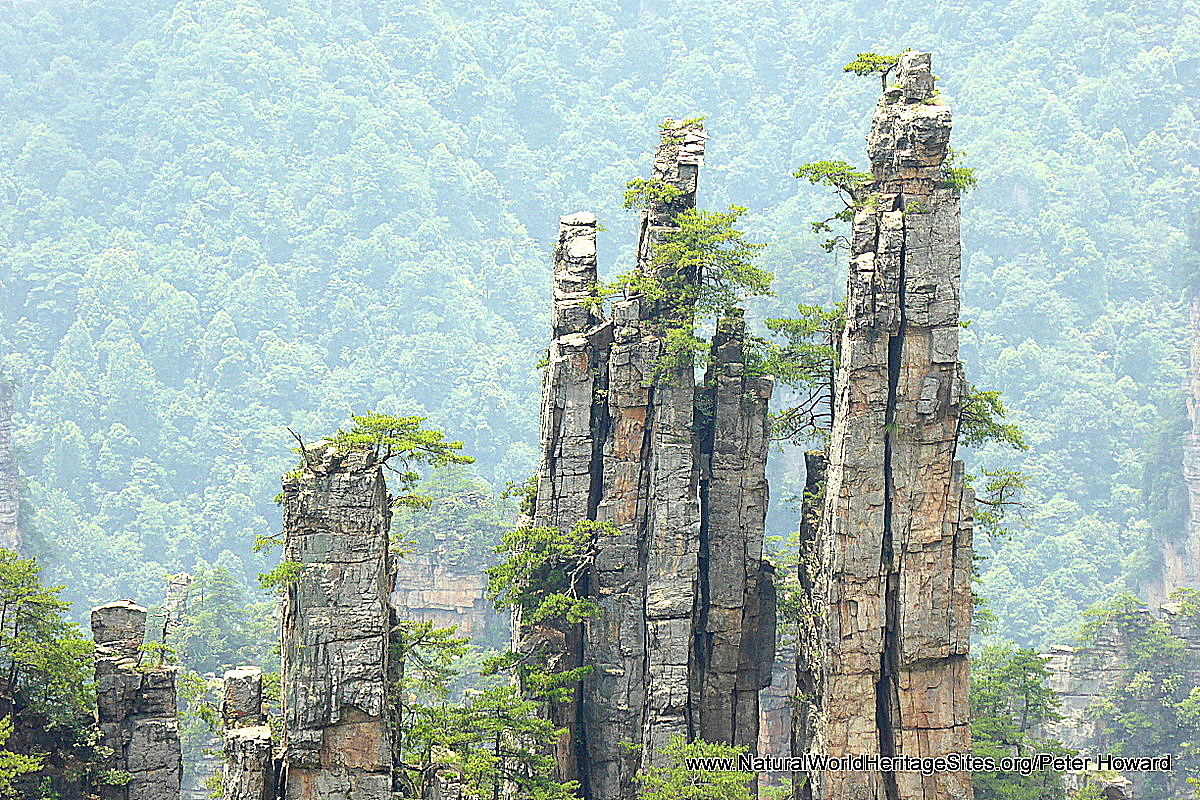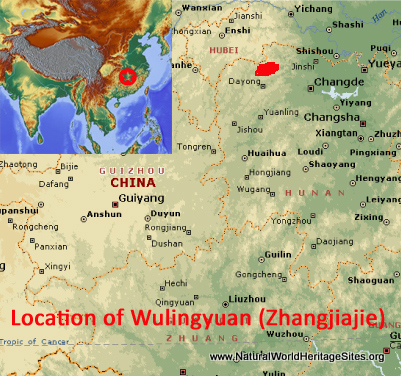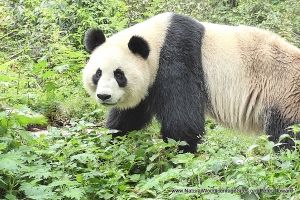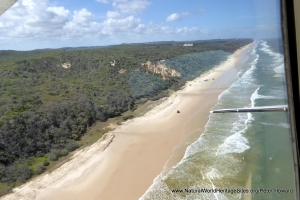EXPLORE CHINA’S WULINGYUAN SCENIC AND HISTORIC INTEREST AREA (also known as Zhangjiajie National Forest Park) with this slideshow, check the location map and get all the facts and information below.
For slideshow description see right or scroll down (mobile). Click to view slideshow
Location and Values: The Wulingyuan Scenic and Historic Interest Area (more often referred to as Zhangjiajie National Forest Park) lies in southern China’s Hunan Province and is recognized for its concentration of spectacular quartzite-sandstone rock pinnacles and spires which are unlike anything else in the world. These formations are set in a landscape of deep ravines and forested hillsides below a high plateau, with clear mountain streams, waterfalls, lakes and some 40 limestone caves. The area supports at least 3,000 species of plants and a fauna that includes several species that are globally threatened with extinction such as the Chinese giant salamander, Asiatic black bear, clouded leopard and Chinese water deer.
Conservation Status and Prospects. According to IUCN’s Conservation Outlook Assessment (2014) the conservation status of the Wulingyuan Scenic and Historic Interest Area is of ‘significant concern’. The IUCN report notes that ‘the integrity of the property generally, and its natural scenic and aesthetic values in particular, are currently threatened with reduction and loss to an unacceptable degree. Active intervention by management to date has alleviated the problems somewhat, but a much more concerted effort is required to mitigate serious loss of the natural attributes that constitute the outstanding universal value of the property. The principal management focus should be introduction of effective regulatory measures to reduce the excessive development of tourist facilities and to control the overcrowding due to a rapid and continuing increase in visitor numbers.
Management must also attend to the threats from air and water pollution, local community land and resource use practices, modification of waterways, and the increased incidence and intensity of flooding and landsliding, occurring both in the property and in the buffer zone.’
Links
Google earth
Official UNESCO Site Details
IUCN Conservation Outlook
UNEP-WCMC Site Description
Birdlife IBA
Slideshow description
The slideshow is intended to ‘tell the story’ of the Wulingyuan Scenic and Historic Interest Area (also known as Zhangjiajie National Forest Park), through a portfolio of photos from a visit by Peter Howard in June 2017. The photos begin with scenes from the scenic walk along the Golden Whip Stream, with its deciduous forests, and towering pinnacles above. It is a hard one-hour climb from here to the top of the plateau where the best views of the rock towers and pinnacles are offered. More than 20 million visitors come to Wulingyuan annually, so the popular paths on the top of the plateau are extraordinarly crowded, and authorities are continuously enlarging and upgrading them. The visitor experience is far from tranquil, at least in the relatively restricted areas around the best view points where McDonalds, selfie sticks and tour group megaphones are the order of things. Away from the view sites, glimpses of the area’s rich biodiversity may be seen – butterflies, macaques, a huge diversity of plants, and Chinese giant salamanders. This is the world’s largest amphibian and at a length of 180 cm it really is a giant. The salamander photo is a captive specimen exhibited at the picturesque Baofeng Lake, in the lowlands, some distance from the spectacular peaks. The vivid green waters of the lake are set amongst densely forested hills and visitors are able to take a short boat trip here. The final part of the slideshow shows the Yellow Dragon Cave, with its massive chambers, underground river and spectacular collections of stalactites, stalagmites and other speleothems – most of which are illuminated in a variety of gaudy colours.
Factfile
Website Category: Earth Features
Area: 264 km2
Inscribed: 1992
Criteria:
Outstanding natural beauty (vii)





